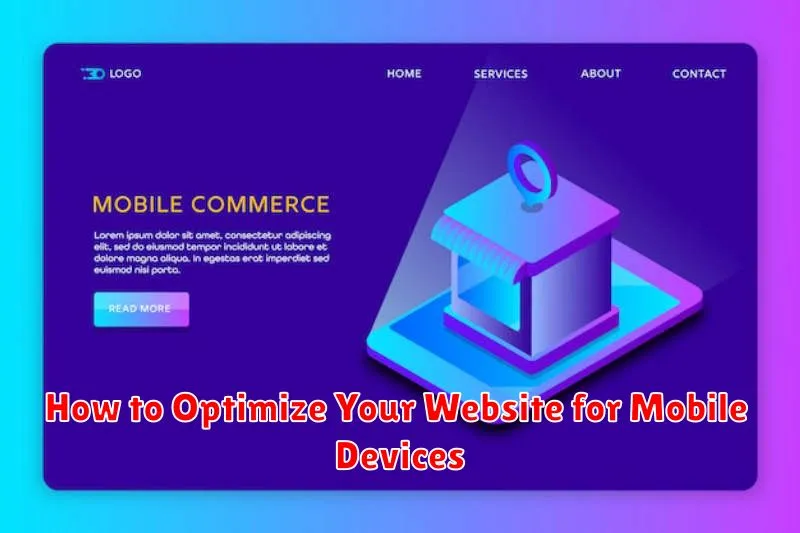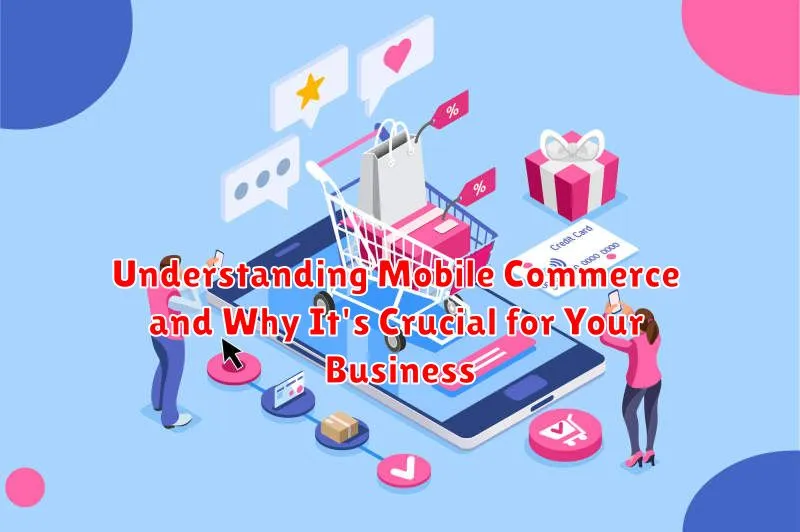In today’s rapidly evolving digital landscape, mobile commerce, or m-commerce, has become a crucial aspect of business success. More and more consumers are using their mobile devices to browse, shop, and make purchases, making a strong mobile presence not just an advantage, but a necessity. This article will explore the core concepts of mobile commerce, examining its significance and how it is reshaping the e-commerce landscape. We will delve into why understanding and adapting to m-commerce trends is crucial for businesses of all sizes, regardless of industry. Understanding the intricacies of mobile commerce is no longer optional; it’s a fundamental requirement for staying competitive in today’s market.
From optimizing your website for mobile devices to leveraging mobile apps and embracing mobile payment solutions, there are numerous strategies businesses can employ to capitalize on the m-commerce revolution. This article will provide valuable insights into the key components of a successful mobile commerce strategy. We’ll cover the importance of mobile commerce, the benefits it offers businesses, and the potential pitfalls to avoid. Whether you’re a small business owner just starting out or a large corporation looking to enhance your mobile strategy, understanding the crucial role of mobile commerce is the first step towards unlocking new growth opportunities and reaching a wider audience.
What is Mobile Commerce?
Mobile commerce, often shortened to m-commerce, refers to the buying and selling of goods and services using wireless handheld devices like smartphones and tablets. It encompasses a wide range of activities, including online shopping, mobile banking, and paying bills via a mobile device. Essentially, any commercial transaction completed using a mobile device falls under the umbrella of mobile commerce.
M-commerce leverages the ever-growing mobile penetration rates, providing businesses with an accessible channel to reach consumers anytime, anywhere. This accessibility distinguishes m-commerce from traditional e-commerce which relies on desktop computers or laptops. The convenience of completing transactions on the go has propelled m-commerce to become a significant force within the retail landscape.
Mobile commerce transcends simply having a mobile-friendly website. It involves creating a seamless and optimized user experience specifically designed for mobile interactions, taking into account smaller screens and touch-based navigation. This can manifest as dedicated mobile apps, streamlined mobile websites, or integrating mobile payment options within a physical store setting.
Why is Mobile Commerce Important?
Mobile commerce, or m-commerce, has become increasingly important due to the pervasive use of smartphones and tablets. It offers businesses unparalleled opportunities to connect with and sell to customers where they spend a significant amount of their time – on their mobile devices. Ignoring this channel means missing out on a large and growing segment of the market.
Enhanced Customer Experience: Mobile commerce offers a seamless and convenient shopping experience. Customers can browse products, compare prices, and make purchases anytime, anywhere, leading to increased customer satisfaction and loyalty.
Wider Reach and Increased Accessibility: M-commerce expands your business reach beyond geographical limitations. It allows you to connect with potential customers globally, especially in regions with limited access to traditional retail channels. This accessibility boosts brand visibility and market penetration.
Data-Driven Insights: Mobile commerce platforms provide valuable data on customer behavior, preferences, and purchasing patterns. This data can be leveraged to personalize marketing campaigns, optimize product offerings, and improve overall business strategies.
Benefits of Mobile Commerce for Businesses
Mobile commerce offers a multitude of advantages for businesses seeking growth and enhanced customer engagement. A key benefit is increased reach. Mobile devices are ubiquitous, allowing businesses to connect with customers wherever they are.
Improved customer experience is another significant advantage. Mobile commerce facilitates seamless and personalized shopping experiences, leading to higher customer satisfaction and loyalty. Features like one-click purchasing and saved payment information streamline the buying process.
Reduced overhead costs are often realized with mobile commerce. The need for physical retail space can be minimized or eliminated, resulting in significant cost savings. Additionally, mobile marketing campaigns can be highly targeted and cost-effective.
Better data analytics is a valuable benefit. Mobile commerce platforms provide businesses with rich data on customer behavior, preferences, and purchasing patterns. This information can be leveraged to personalize marketing efforts and improve product offerings.
Mobile Commerce Trends to Watch Out For
The mobile commerce landscape is constantly evolving. Staying ahead of the curve requires awareness of emerging trends. Here are some key trends to watch:
The Rise of Social Commerce
Social media platforms are increasingly becoming transactional. Social commerce seamlessly integrates shopping experiences within social media, allowing users to discover and purchase products without leaving their preferred platform. This trend is blurring the lines between social interaction and online shopping.
Augmented Reality (AR) and Virtual Reality (VR) Experiences
AR and VR are enhancing the mobile shopping experience. AR allows customers to visualize products in their own environment before purchasing, while VR can create immersive shopping experiences, replicating the in-store environment virtually.
Voice Commerce is Gaining Traction
With the increasing popularity of voice assistants, voice search is transforming how consumers discover and purchase products. Optimizing for voice search is becoming crucial for mobile commerce success.
The Importance of Personalization
Personalized shopping experiences are becoming the expectation. Leveraging data to tailor product recommendations, offers, and content is crucial for driving engagement and conversions in the mobile commerce space. This includes personalized search results and targeted advertising.
Best Practices for Mobile Commerce Success
Optimizing your business for mobile commerce requires a strategic approach. Prioritize a seamless and user-friendly mobile experience. This includes a responsive design that adapts to various screen sizes and fast loading speeds.
Streamline the checkout process. Minimize the steps required for purchase and offer various payment options, including mobile wallets. Security is paramount. Implement robust security measures to protect customer data and build trust.
Personalization is key. Leverage data to tailor product recommendations and offers to individual users. Engage with your customers through push notifications for promotions and updates, but avoid being intrusive.
Finally, regularly analyze your mobile commerce performance. Track key metrics like conversion rates and average order value to identify areas for improvement and stay ahead of the competition.
How to Optimize Your Website for Mobile Devices

Optimizing your website for mobile devices is crucial for success in m-commerce. A responsive design is essential, allowing your website to adapt seamlessly to different screen sizes. This means ensuring your website layout, images, and text adjust dynamically to fit any device, from smartphones to tablets.
Page load speed is paramount. Mobile users expect fast loading times. Minimize HTTP requests, compress images, and leverage browser caching to ensure a snappy experience. A slow-loading website can lead to high bounce rates and lost sales.
Simplify navigation. Use a clear and concise menu structure that is easy to navigate on a smaller screen. Consider using a hamburger menu to condense navigation options and save valuable screen real estate. Large, touch-friendly buttons improve the user experience.
Optimize forms for mobile input. Keep forms short and simple, minimizing the amount of typing required. Utilize input fields that are optimized for mobile keyboards, such as larger text areas and number pads.
Examples of Successful Mobile Commerce Businesses
Several businesses have effectively leveraged mobile commerce to achieve significant growth and market penetration. Examining their strategies offers valuable insights for others looking to succeed in this space.
Starbucks: Their mobile app seamlessly integrates loyalty rewards with mobile ordering and payment. This encourages repeat business and provides a convenient, personalized experience. Customers can easily locate stores, browse the menu, customize orders, and pay ahead, skipping the line entirely.
Sephora: By offering a rich mobile experience, Sephora enhances the in-store shopping experience. Features like augmented reality to try on makeup virtually, personalized product recommendations, and seamless checkout through the app have driven customer engagement and sales.
Amazon: The undisputed leader in e-commerce, Amazon has also mastered the art of mobile commerce. Their mobile app provides a comprehensive shopping experience with a vast product catalog, personalized recommendations, fast and secure checkout, and easy order tracking. This allows customers to shop anytime, anywhere, from the convenience of their mobile device.
Mobile Commerce vs. E-commerce: Key Differences

While both mobile commerce (m-commerce) and e-commerce involve online transactions, key differences exist. E-commerce encompasses all online transactions regardless of device, encompassing desktop computers, laptops, and tablets. M-commerce specifically refers to transactions conducted on mobile devices, such as smartphones and tablets with cellular connectivity.
A primary differentiator is accessibility. M-commerce allows shopping anytime, anywhere, leveraging the constant connectivity of mobile devices. E-commerce, while accessible through various devices, may require access to a computer or reliable internet connection which isn’t always readily available.
User experience also varies. M-commerce prioritizes streamlined interfaces and quick transactions optimized for smaller screens. E-commerce websites, while often responsive to mobile devices, may offer a more comprehensive browsing experience better suited to larger screens.
Payment methods are another key difference. M-commerce often integrates mobile wallets and one-click purchasing options for faster checkout. E-commerce traditionally utilizes credit/debit cards and online payment platforms, which might require more input on mobile devices.
Future of Mobile Commerce
The future of mobile commerce is brimming with potential, driven by evolving technologies and changing consumer behavior. Augmented reality (AR) and virtual reality (VR) are poised to revolutionize the shopping experience, offering immersive try-before-you-buy opportunities. Imagine trying on clothes virtually or visualizing furniture in your living room before purchasing – these are becoming realities.
Artificial intelligence (AI) will play a crucial role in personalizing mobile shopping journeys. AI-powered chatbots can provide instant customer service, while personalized recommendations and targeted advertising enhance the user experience.
Voice commerce is another emerging trend, allowing consumers to shop using voice commands. The convenience of ordering products through voice assistants is expected to drive further growth in mobile commerce. Furthermore, the increasing adoption of digital wallets and mobile payment systems will streamline transactions, making mobile shopping more seamless and secure.
The expansion of 5G networks will also be a catalyst for mobile commerce growth. Faster download speeds and reduced latency will enable richer mobile experiences, supporting the development of more complex and interactive mobile commerce applications.

